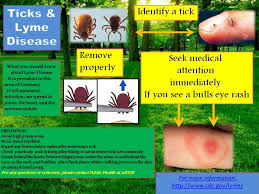
Introduction to Lyme Disease
Lyme disease has emerged as a significant public health concern in recent years, especially in the UK and North America. Transmitted primarily through the bite of infected ticks, this illness can lead to serious health complications if left untreated. With rates of infection increasing annually, understanding its symptoms, treatments, and preventative measures is crucial.
What is Lyme Disease?
Lyme disease is caused by the bacterium Borrelia burgdorferi, which is commonly spread by ticks, particularly the black-legged tick (Ixodes scapularis). Symptoms typically appear in stages, with an initial rash known as erythema migrans developing around the bite site, often resembling a ‘bull’s-eye’. Other early symptoms may include fever, fatigue, and headaches.
Current Trends and Statistics
According to recent data from the UK Health Security Agency, there has been a notable increase in reported cases of Lyme disease over the past decade. In 2022, around 1,000 cases were confirmed, marking a 25% increase compared to previous years. The surge in cases is attributed to factors such as climate change, which has contributed to the expansion of tick habitats, and more people engaging in outdoor activities in tick-infested areas.
Symptom Progression
If left untreated, Lyme disease can progress to more severe symptoms, including joint pain, neurological issues, and heart problems. These complications, which can develop weeks, months, or even years after the initial infection, underscore the importance of timely diagnosis and treatment.
Treatment Options
Treatment for Lyme disease typically involves a course of antibiotics, with doxycycline being the most commonly prescribed. Early intervention often leads to a complete recovery, emphasising the need for awareness of the disease and recognition of its symptoms. In cases where symptoms persist after treatment, some patients may experience post-treatment Lyme disease syndrome (PTLDS), characterized by lingering symptoms that can last for months.
Preventative Measures
Preventing Lyme disease involves several strategies. Individuals are encouraged to wear protective clothing, use insect repellent, and conduct thorough tick checks after outdoor activities, particularly in forested or grassy areas. Public health campaigns are also increasing awareness about the disease and its prevention methods, advising individuals to be vigilant during peak tick season, which typically occurs during late spring and summer.
Conclusion
Lyme disease represents a growing health threat that highlights the need for increased public awareness and preventative measures. With continued monitoring and education, there is hope that the trend of rising cases can be reversed. Understanding the symptoms and ensuring timely treatment is essential for reducing the long-term impacts of this debilitating disease.
You may also like

The Rising Threat of Super Flu: What You Need to Know

Understanding Melatonin: Uses, Benefits, and Importance
